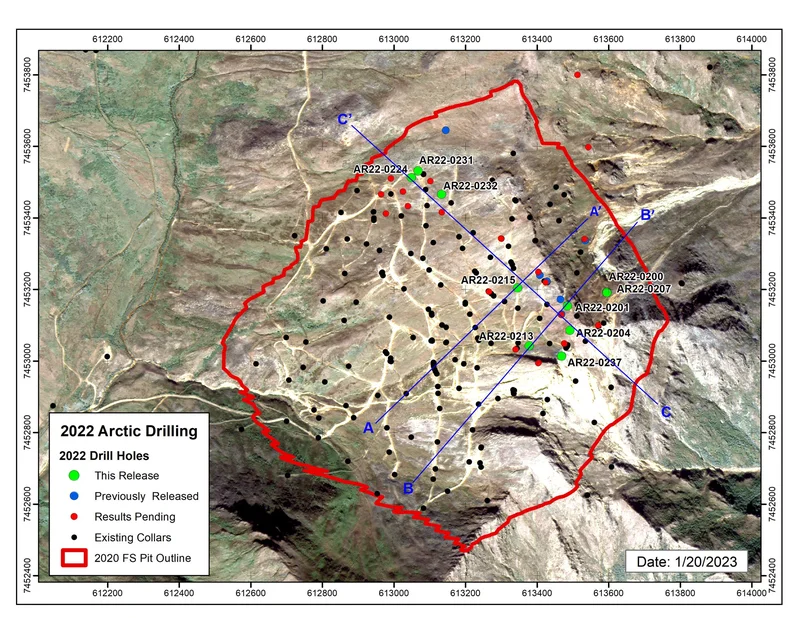When the news flashed across my screen—the U.S. government taking a direct stake in a remote Alaskan mining company—I honestly just sat back in my chair for a moment. It’s one of those headlines that feels like a misprint. A government, especially America’s, investing directly in a minerals explorer? It sounds like something from a different era, a different economic philosophy entirely. The market, of course, reacted with a jolt. Trilogy Metals stock shot up over 200%, a dizzying spike that made fortunes overnight and dominated the financial news cycle, with headlines asking Trilogy Metals Stock Skyrockets: Time to Invest?
But to see this as just a stock story, a clever trade by a hedge fund manager, or even a purely political maneuver is to miss the forest for the trees. This isn't about a quarterly earnings report. This is about the next hundred years. What we are witnessing, in the stark, cold wilderness of Alaska, is the physical manifestation of the next great global race. The abstract battle for AI supremacy, for the future of energy, for technological sovereignty—it’s no longer just happening in clean rooms and data centers. It’s happening in the dirt.
This is the kind of breakthrough that reminds me why I got into this field in the first place. We’re watching the digital world finally and fully acknowledge its physical parentage. We’re seeing a government pivot from merely regulating technology to actively building its foundation, ounce by precious ounce. And it’s a shift that will redefine everything.
For years, we’ve talked about the race for better algorithms, faster chips, and smarter software. We’ve focused on the ethereal realm of code and data. But we’ve taken for granted the physical world that makes it all possible. Imagine trying to build the world’s tallest skyscraper. You can have the most brilliant architectural plans, the most advanced engineering software, but if you don’t have steel, concrete, and glass, you have nothing but a blueprint. The Trilogy Metals investment is the American government realizing it needs to own the quarry.
Let’s be clear about what’s at stake here. The Ambler Mining District in Alaska isn’t just any piece of land; it’s one of the planet’s largest undeveloped caches of copper-zinc mineral belts. We’re talking about copper, cobalt, silver, and gold. And when we say "critical minerals"—a term that can sound vague—we need to be specific. To put it simply, copper is the circulatory system of modern technology. It’s in the semiconductors that power the AI revolution. It’s in the electric vehicles that are key to our energy transition. It’s in the wiring that connects our entire digital infrastructure.

This isn’t an isolated move. It’s a pattern, a deliberate strategy. We saw it with the investment in Lithium Americas, securing access to North America’s largest lithium deposit for our battery future. We saw it with MP Materials, rebuilding our domestic supply of the rare earth elements essential for everything from smartphones to defense systems. This investment in Trilogy Metals is the next, and perhaps most crucial, piece of that puzzle. It’s a declaration that the United States will no longer be dependent on the geopolitical whims of other nations for the raw materials of its own future. What good is designing the world’s most advanced AI if the wiring it runs on is controlled by a geopolitical rival?
Of course, this grand vision comes with a deeply uncomfortable reality. To get to these minerals, a 211-mile road—the Ambler Access Project—must be carved through a remote and pristine part of Alaska. This is a project the previous administration blocked over environmental concerns, and for good reason. The road will undeniably disrupt delicate ecosystems and impact lands that support local communities and wildlife.
And here lies the brutal calculus of the 21st century—we all want a clean energy future powered by EVs and a hyper-connected world of ubiquitous AI but that future is literally buried under some of the last untouched landscapes on Earth and we have to decide, right now, how to bridge that almost impossible gap. There’s no easy answer. Ignoring our mineral dependence is a national security risk. Ignoring the environmental cost is an abdication of our planetary stewardship.
This is where the conversation has to get more nuanced. The administration claims it’s committed to "responsible resource development," but what does that truly mean? Can a 211-mile industrial road through the Alaskan wilderness ever be truly "responsible"? These are the questions that should keep us up at night. This isn't a simple story of progress versus preservation; it's a story of choosing between two different kinds of futures, both with profound costs. How do we innovate not just in our technology, but in our methods of extraction? How do we ensure that the communities who have stewarded these lands for generations are partners and beneficiaries, not casualties, of this national project? The challenge isn't just to build the mine; it's to build a new model for progress itself.
Forget the stock charts for a second. This move by the government isn't a trade; it's a signal flare. It’s the loudest and clearest admission yet that the next technological revolution will be won not just with brilliant minds and elegant code, but with mud, sweat, and heavy machinery. We are finally treating the physical supply chain with the same urgency we’ve long reserved for intellectual property. This is the bedrock of our digital future being laid, stone by painstaking stone, and it’s happening right now, in the frozen north. It’s messy, it’s complicated, and it forces us to confront difficult truths about what progress truly costs. But it’s necessary. The future we’ve been dreaming of has to be built on something real.